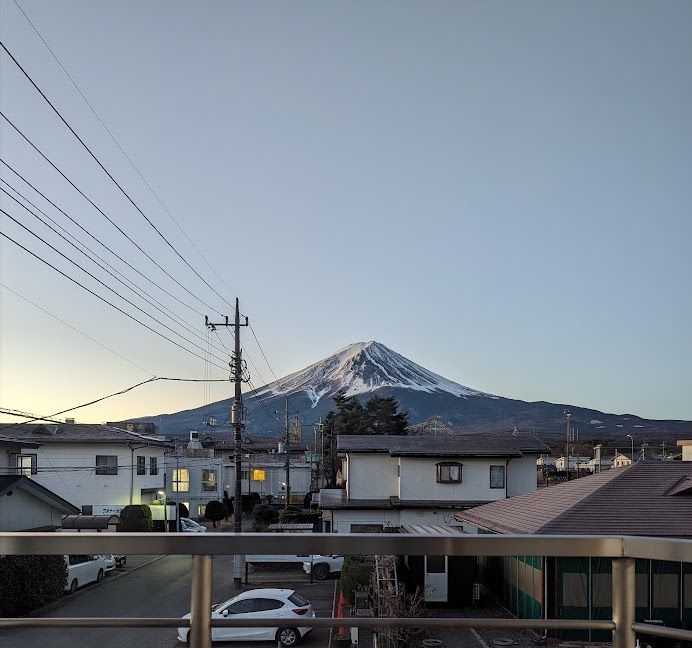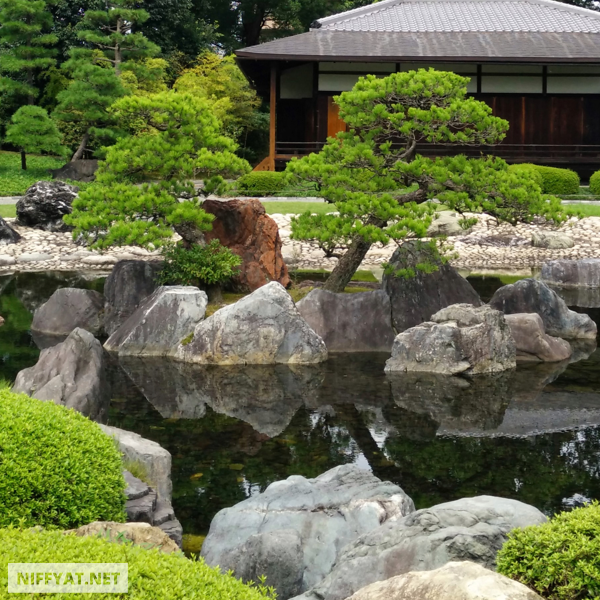Last updated January 22, 2023
Note: This is part 1 of a series dedicated to my Japan travel advice. For the entire series, see:
• Part 1 - When to Go & Where to Stay
• Part 2 - Getting Around
• Part 3 - Getting Online & Saving Money
I’m not a world traveler quite yet, but I do love visiting Japan. Studying Japanese for over a decade, Japan is the primary place where I can test how well I know the language. Besides testing my Japanese, another reason I keep going back is because there’s so much to do across the different cities and regions. You could never truly experience Japan in it's entirety in a single trip. Because I’ve been multiple times now (6 times to be precise!), I frequently get asked by friends for advice or suggestions about trips to Japan. I thought it would be easier and more convenient to share my travel tips in a dedicated series of blog posts instead of across DMs or emails. And with that, let's get started!

When To Go
First, to alleviate any concerns I will say this—any time or season you go to Japan, you’re going to have a great time. I personally don't think there's a "best" time to go, as all seasons have their benefits. I say that with confidence because I've been to Japan in every season so far:
- Spring: In April 2016, I went during the sakura (cherry blossom) season (April) for two weeks
- Summer: The first time I went to Japan was spring/early summer in 2013 (May-June) for almost 30 days
- Fall: late August/early September in 2015 for 2 weeks, November 2016 for 2 weeks
- Winter: In December 2017 to January 2018, and then most recently for 3 weeks in December 2022 (thanks for the 3-year break, COVID!)
To alleviate any concerns I will say this—any time or season you go to Japan, you’re going to have a great time. I personally don't think there's a "best" time to go, as all seasons have their benefits.
Going to Japan during the 桜 sakura season is magical, so usually people say that's the definitive time to visit Japan. And it's true that the cherry blossoms are visually stunning. If you're going during the sakura season you'll definitely leave with a distinctive memory of Japan's natural beauty. But what people leave out about going during the peak of the cherry blossom season is that it’s really crowded—the sheer amount of tourists flocking to major attractions from across Japan and the entire world can be overwhelming. Due to COVID, this has slowed down from what I have read (I didn't go post-COVID until December 2023). I am sure that Japan's first post-COVID sakura season will be very crowded, but I hope it's not as bad as it was in 2017/2018 when tourists' bad behaviour during peak tourism seasons was nightly news. That said, if you don't mind crowded tourist attractions you'll be fine. I personally don't enjoy being in a crowd of tourists because the major tourist attractions are packed to the point where it is not as enjoyable for me. There’s tons of tourists from all over the world with different styles and cultures, and not everyone is polite and accommodating. So you may have to deal with some rude, pushy tour groups or individuals that make peak tourist spots like Ueno Park in Tokyo or Arashiyama in Kyoto pretty unbearable. Because of this, if you do go Japan in this or any peak tourist season, I recommend staying away from the main tourist spots and doing more local things. That’s why I think it’s going to Japan during the off-seasons is a great idea. It's not crowded and it's possible to enjoy tourist areas like Kinkakuji Temple or Kiyomizu-dera without feeling overcrowded. It’s also really expensive to travel to Japan during cherry blossom season due to price surges, so be aware of that.
The other thing to consider is the weather. The first time I went to Japan, it was extremely muggy and hot—that is summer in Japan! The way to describe muggy weather in Japanese is 蒸し暑い mushi-astsuii, and it felt so hot that I was saying it every day. Coming from San Francisco, I was melting—and it was not even peak summer yet! The second trip we arrived in late summer right at the start of a typhoon’s approach so it was raining for most of the trip. Our return flight was actually the day before the typhoon hit land, and it actually caused severe damage after we departed. It was beautiful weather during the spring sakura season trip, but since the typhoon was approaching, towards the end of the trip it was very rainy. I still enjoyed myself, and it made things a little less crowded on those rainy days.
My winter trips to Japan were both quite cold, with some rain ! In the fall 2016, there was actually a historic snowfall in Tokyo—it was that cold. But it wasn't a bad experience, just quite different from the past warm and rainy trips. Also, in my experience Tokyo is a little warmer than Kyoto. And going up to the mountains always drops the temperature, so plan accordingly. Overall, as long as you layer properly, you'll be fine!
Lodging
I have stayed in hotels, 旅館 ryokan (a traditional Japanese inn), and Airbnb in Japan. I have found that Airbnb is can be very inexepnsive, but it seems many closed during the pandemic. It’s easier to save money by cooking in the Airbnb because they typically have a kitchen, and you can easily grab groceries at a コンビニ konbini or Japanese convenience store. I used to prefer Airbnb, but with the more limited inventory and higher prices now, I usually split my trip between an airbnb and a hotel.
I do recommend that everyone try staying in a ryokan, or a traditional Japanese inn, at least once. It’s such a uniquely Japanese experience. And if you can stay in one with natural hot spring baths, it’s even better! The ryokans I have stayed in were in Kyoto and Nara. They were in less populous areas, so it’s a nice break from the hectic city atmosphere. Learn more about ryokan here: Japanese Ryokans vs. Hotels (Boutique Japan).
I recommend that everyone try staying in a ryokan at least once. It’s such a uniquely Japanese experience.
If you are at all worried about not being able to speak Japanese, then staying at a very fancy hotel or ryokan can alleviate that concern. The more expensive the accomodations, the better command of English the staff will typically have. But even budget business hotels may have staff that speak conversational English. Not all ryokan have staff that speak English though, so keep that in mind when you book the reservation.
One other benefit of staying in a hotel is that they often have a free or discounted breakfast option, and it’s usually an all-you-can-eat buffet. It can be difficult to find a traditional American style breakfast in Japan outside of 24-hour diners (called family restaurants), but you can definitely find it in your hotel if they have restaurant. Also, if you stay at a hotel they usually will help you ship your luggage to your next destination, be it another hotel or an airport (more on that in part 2!). Another option is home stays. I'm lucky enough to have wonderfully kind friends in Japan who have let me stay at their home in Kyoto. It's fun to do everyday things with them, like going to the mall or visiting local temples and parks in their area. Also, they know local spots and events that tourist sites and handbooks don't know about. If you don't have friends in Japan, you could probably recreate a homestay by renting a room in a home via Airbnb instead of renting an entire apartment. There are also sites like Homestay.com or private rooms in Airbnb, where you can find a local family willing to board you.
Here's a list of the different places where I've stayed in Japan, sorted by most to least recent:
- Airbnb: GIVE Higashi-Nakano (Higashi-Nakano) These are actually short-term apartments more than a hotel. This is my favourite place to stay in Toyko—I've stayed here twice! I love the Higashi-Nakano neighborhood! If I lived in Tokyo, I think that's where I'd move to.
- Hotel: Park Hotel Tokyo (Shiodome) This hotel is really nice. Not as expensive as the Grand Hyatt, but it still felt very premium compared to the other hotels in this list. It is very easy to take the nearby train to Narita Airport via a single train (Keisei Narita Skyaccess). For that reason, it is a perfect place to spend your final days in Tokyo before departing, if you're flying out of NRT
- Hotel: Grand Hyatt Tokyo (Roppongi) This is a very lovely but very expensive hotel! It's not the one from Lost in Translation. That's the Park Hyatt in Shinjuku. I stayed here because it was close to my office in Toyko. I would only stay here for a business trip, with points, or maybe as a very special occasion.
- Hotel: Akihabara Washington Hotel (Akihabara)
- Hotel: the b tokyo ochanomizu (Kanda-Awajicho)
- Airbnb: Nakano The first place I ever stayed at in Japan. It is very much a budget stay! Clean when I stayed, but small and offering bare-minimal essentials. As an older showa apartment. Overall, it's fine for sleeping, albeit a bit cramped and outdated.
- Airbnb: Hana House (west Kyoto, near Katsura Eki) This was a 100+ year old 古民家 kominka, or old tradational house. My hosts were lovely and they prepared a delicious breakfast each day. I normally do not like staying in other people's homes but since this was a chance to experience living a traditional Japanese house, I think it's worth it to try for a 1-2 nights.
- Airbnb: Shimogyō-ku (near Gion)
- Airbnb: Nishikyo (west Kyoto, near Katsura Eki)
- Ryokan: Momijiya Annex The nicest ryokan I've been in. There's only a handful of rooms available; each one has a private, outdoor/open-air wooden bath attached to it. It's totally private, so you soak in peace without any stress. It's like having your own private onsen attached to your room!
- Hotel: K's House Fuji View - Travelers Hostel This is a hostel, but they have a few rooms that are more like a budget ryokan experience. We stayed in the Deluxe Japanese-Style Ensuite Room with Mt.Fuji View and it had it's own private bathroom and toilet. It's super inexpensive but you have a stunning $500 baclony view of Mt. Fuji right out your window (see the picture below this list!)
- Ryokan: Kasuga Hotel
- Ryokan: Daibutsukan
- Hotel: Hotel Sunroute Osaka Namba
➡️ Continue to Part 2 - Getting Around







No comments.